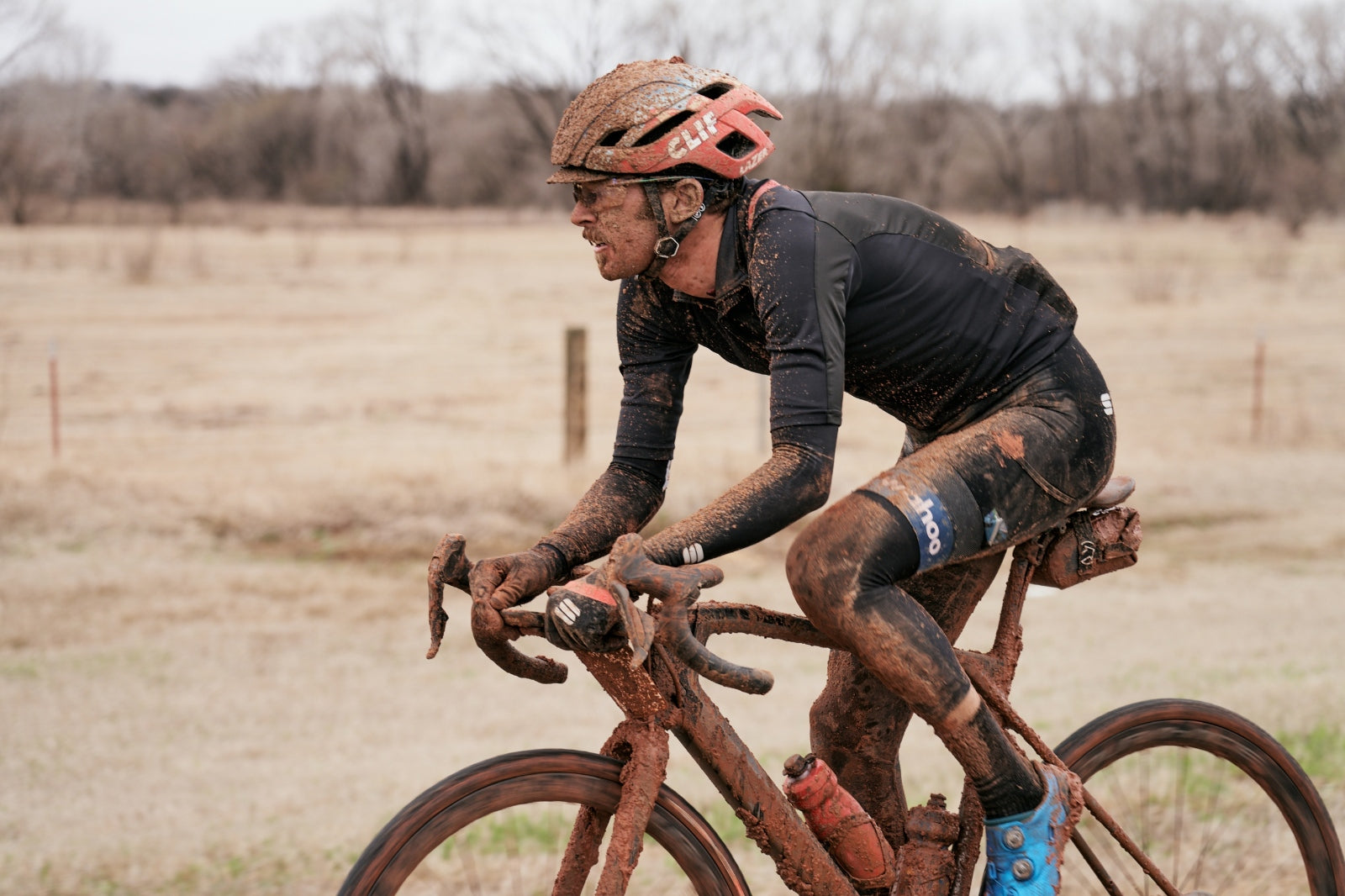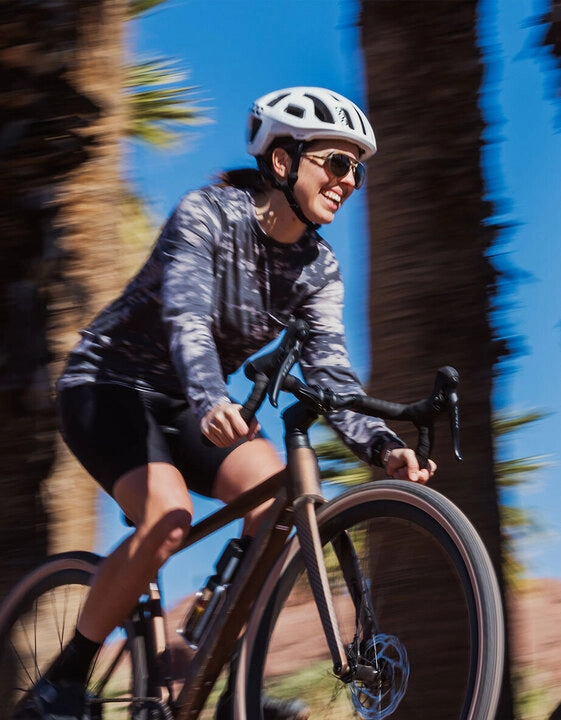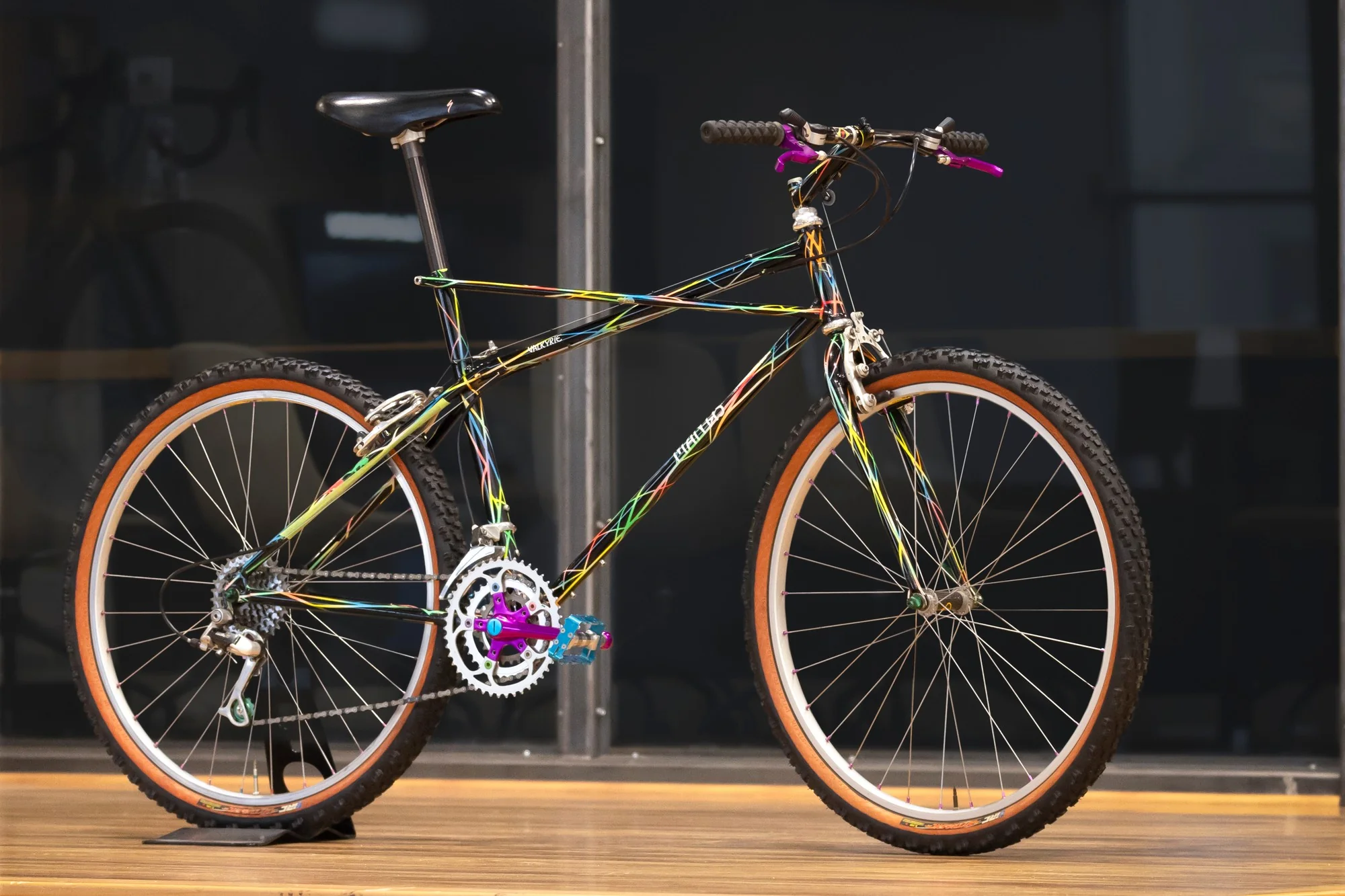With their whippet physiques, matching team kits, and crisp helmet-strap tan lines, the roadies stood out. Until recently, Unbound Gravel (formerly DK 200) had been a place where you’d more likely see a chest-length beard than a seasoned international pro. Guys like Pete Stetina or Taylor Phinney would ordinarily be chasing results in Europe during the heart of the season. Instead, these world-class riders mingled under the midday sun in Emporia, Kansas, the day before the world’s top gravel event.
Road cyclists have dabbled in the dirt for years. In fact, some gravel events were borne out of off-season training grinds across the rolling Midwestern hills. But in 2019, the world of cycling saw a growing trend. Pro road riders made a concentrated effort to include mass-participation gravel races on their calendars. These weren’t just one-off appearances. Plus, these riders were leading the front group and racing to win.
This trend is bound to continue, and in fact, it is not new. The same sort of exodus from road to the dirt occurred in the early 1990s when pro road riders transitioned to the booming world of mountain bike racing. They made the move for many of the same reasons as modern-day gravel pros.
In both cases, elite roadies are and were attracted by the adventure dirt can offer. From a practical standpoint, industry sponsors are lining up to support talented riders on the gravel, much like they did for mountain biking. To thrive, today’s gravel cyclists rely on creativity and entrepreneurial skills to go their own way, much like their predecessors did in the early days of mountain bike racing. And not surprisingly, this all leads to more competitive racing and a few hurt feelings.
 More than ever before, top pro road riders toed the line at the 2019 DK 200. Photo: Life Time Fitness
More than ever before, top pro road riders toed the line at the 2019 DK 200. Photo: Life Time Fitness
Ted King was one of the first pro road riders to make the jump to gravel about five years ago. After 10 years of working for top riders, such as three-time world champion Peter Sagan, King retired from the peloton in 2015. But he wasn’t ready to finish racing just yet. He won DK in 2016, his first attempt at the race.
Like King, Alison Tetrick was ready for a new path in pro cycling when she left road racing for gravel. She also won her first round at DK, a year after King’s first victory.
Tetrick had struggled with injuries in the rough-and-tumble world of pro road racing, most notably a debilitating concussion. She was ready to stop risking her long-term health to win bike races. She was also ready for a new challenge.
“I had done every big race there was except the Olympics. I wasn’t finding any more goals that inspired me,” she said. “As an athlete, you love riding and training but you want to be inspired and motivated by your goals, and I wanted to try a new challenge. DK sounded incredibly hard and adventurous, a way I could start writing my own story.”
During that season, she was blending both road and gravel races. That long, hard, windy day in Kansas back in 2017, which Tetrick won in a sprint finish, was a turning point for her.
“I was like, ‘Okay what’s the next event I can do?” she said. “It was a pivot point for me. I already knew I never wanted to race on the road again.”
As 2019 came to an end, Pete Stetina, a Tour de France veteran, also had a gravel epiphany.
Like Tetrick, he blended gravel events into his 2019 schedule, winning Belgian Waffle Ride in California, finishing second at DK, all the while maintaining a full slate of European road races at the sport’s apex. But as he did those dirt events, he immediately noticed a trend.
“We saw the data metrics, social engagement, coming out of these alternative races and it was mind-boggling, exponentially higher,” Stetina said. “I had this realization; damn this makes sense. This could actually be a full-time thing, and I think I could have more fun.”
Gravel is a fast-growing segment in an otherwise stagnant bike industry. With real-world experience and hard data to back it up, Stetina was equipped to pitch major brands and secured sponsorship from Clif Bar, Canyon, and Sportful. In 2020, he’ll leave the WorldTour road scene behind to strictly race on the dirt.
“It’s a no brainer — this sport is grassroots, the wild west of innovation and not in a stranglehold by the UCI," he added. "You can do whatever the heck you want with bike products. I think the industry is behind that.”

What’s more, this type of trend has happened before. Thirty years ago, cycling saw a similar sea change when mountain biking’s popularity skyrocketed and intrepid roadies followed the trend. Just like the gravel pros of 2020, riders like Bob Roll sensed the industry’s attraction toward a fresh discipline and put in the work to define themselves as a new type of professional cyclist.
Roll was asked to leave the Motorola pro team after just a season, putting an end to his seven-year road career that included three starts in both the Tour de France and Giro d’Italia. At the end of 1991, looking for a job, the fast-growing world of mountain biking was a bonanza for Roll.
“There was definitely more opportunity, absolutely,” Roll said. “Those days it was really dynamic and commercially a very good idea for the companies involved. In those days without a mountain bike presence, it was tough to stay in business.”
And he wasn’t alone. Others, like Rishi Grewal, Andy Bishop, Ruthie Matthis, and Bart Bowen switched from road to mountain bikes in the ‘90s.
However, for Roll, it was a lot more work compared to the plug-and-play system of a well-organized road team.
“I was on the phone with the sponsors daily. I orchestrated the whole thing, put it together by myself basically,” he said. Roll ended up with a healthy collection of sponsors, including the new bike company that Tour champion Greg LeMond was launching. “It was nice to map out my own schedule and represent the sponsors I felt would be the best fit, and it was very hard work.”
Like Roll, Stetina recognized the amount of time and effort that goes into building a privateer program. But he enjoys the tight relationship he’s built with his sponsors, something Roll also valued.
“It’s definitely a lot of work putting all the pieces of the puzzle together but at the same time, it’s gratifying,” said Stetina. “I have sponsors that I chose, that I believe in, and I can work with them on product R&D.”
 Stetina racing in the mud at The Mid South gravel event in March 2020. Photo: Wil Matthews | WilMatthewsPhoto.com
Stetina racing in the mud at The Mid South gravel event in March 2020. Photo: Wil Matthews | WilMatthewsPhoto.com
Perhaps no one knows the grind of chasing sponsors and organizing your own program as well as Colin Strickland.
Unlike Stetina, who was on a path toward the pro peloton since his teenage years, Strickland came to the sport late in life. He spent three years with a domestic criterium team, then transitioned to fixed-gear crits, namely the Redhook Crit series. But after a few years, he sensed that his future was in gravel racing
“I saw the writing on the wall that Redhook was limited in terms of its marketability. What is it selling besides entertainment?” Strickland said. He was also pessimistic about traditional road racing.
“I think if you assemble all the facts, in road, the numbers are just not in your favor. About 10 guys in the U.S. make it to WorldTour and the rest are just fighting for scraps,” he added. “There’s no guarantee. You have about a .5-percent chance to make it to Europe and have any kind of career. A lot of people don’t look at it that way. They think they put in the work and get the opportunity, but life’s not fair and road racing especially is not fair.”
So instead of chasing a fleeting dream, Strickland took a pragmatic, entrepreneurial approach. Like Tetrick, Stetina, Roll, and others, he cultivated sponsorships with brands he respected. He kept the coveted Red Bull sponsorship he earned through fixed-gear racing. ENVE and Allied were also major supporters.
And he paid off their trust in spades by winning the 2019 DK ahead of Stetina, King, and numerous top professionals.

Colin Strickland making the winning move at DK 2019. Photo: Life Time Fitness
That victory led to an unexpected opportunity: The EF team offered him a WorldTour contract for 2020. At first it was the dream that Strickland had thought was over. He excitedly planned to sign the contract, move to Girona, Spain, compete in the world’s biggest races. Then, things got complicated.
After delays in the negotiation, Strickland was told he’d have to cancel his Red Bull sponsorship. He was also offered only a one-year contract for less money than he’d expected. In an odd twist of fate, he turned down the opportunity that he and many riders like him had fought so hard to earn.
“It would be challenging, and I like challenges, but it’s not a smart gamble in my opinion. I have a sweet gig right now,” he said. “It seemed like more of a status thing and other peoples’ dream.”
The dream of being a pro bike racer doesn’t look quite like it used to. Stetina sees this as a great opportunity for him and riders like Strickland and Tetrick to lead the way.
“I'm going to be able to make a living. I’m still going to be a full-time bike racing pro,” he said. “I’m supporting this grassroots movement and showing it’s legit. I hope it sets the tone for other guys, and that’s what gravel is, it’s inclusive and communal.
“Gravel is legit now — it’s a nice alternative to the tried-and-true path.”
 Roll made the switch to knobby tires as mountain bike racing was booming, and for him, it was worth the work. Photo: Zapata Espinoza | Mountain Bike Action
Roll made the switch to knobby tires as mountain bike racing was booming, and for him, it was worth the work. Photo: Zapata Espinoza | Mountain Bike Action
Although Pete Stetina and others like him insist that they are part of the grassroots gravel movement, there was inevitable grumbling and hyperbolic headlines suggesting that “pro roadies are ruining gravel.”
Stetina himself came under fire at the 2019 DK. First he was criticized on social media for equipping his bike with aero bars, something many top riders had tacitly agreed not to do. And then after finishing second he missed the podium ceremony, traditionally held the day after the race. That second gravel faux-pas was due to an innocent misunderstanding over logistics — social media commentators rarely concern themselves with nuance.
Back in the early ‘90s, mountain biking purists also grumbled about roadies who flocked to the growing discipline.
“There was definitely a level of antipathy toward those guys to a degree, just to make fun of them.” Mountain Bike Action editor Zapata Espinoza says remembering the carnage on technical race tracks that caught many road cyclists off-guard.
In part, the roadies were easier targets. The physical and technical demands of a pro mountain bike race were at odds with their years of experience in the European peloton, regularly doing all-day races on glass-smooth pavement.
“Mountain bike starts were so violent, just impossible to imagine,” said Roll. “In the Giro, you have a seven-hour stage and the first hours you are creeping. In the first two weeks of the first Giro I did, I gained six pounds!”
On the other hand, a 200-mile endurance test like Unbound is perfect for an ex-roadie. And perhaps their immediate success also contributed to some of the antipathy.
“If you get small-minded and tribal about it, it was a bad thing to have the roadies. Back then, all of a sudden, Ned [Overend] wasn’t winning races anymore,” says Espinoza, referring to the legendary world champion mountain bike specialist.
Without question, the influx of road racers shaped mountain biking, both in positive and negative ways. What will happen to gravel racing? It’s probably too soon to tell. But if you look at the results from all of the major races from the last season, you can see that right away, these talented newcomers are making it a lot more competitive.
“The road guys came to mountain biking just like they’re doing now with gravel. I’m a little older — definitely a lot wiser now — and I think it’s bitchin’ because it’s racing,” Espinoza adds. "There’s always the purity of racing, and that turns me on.”


























